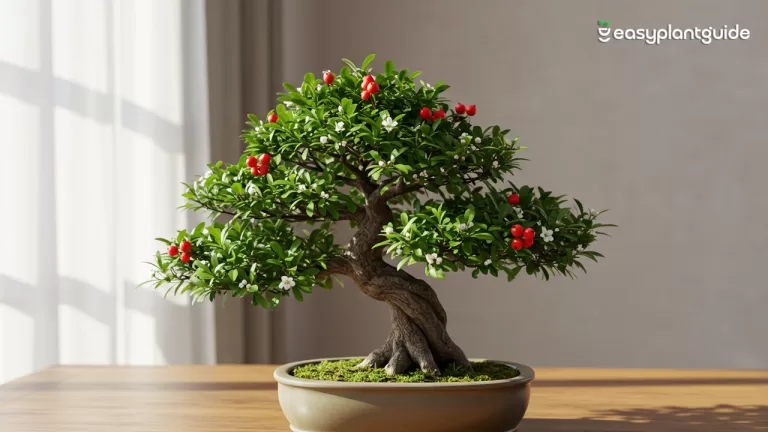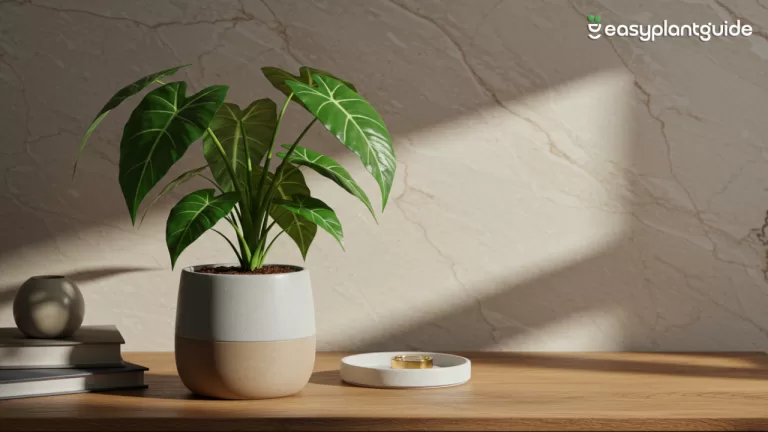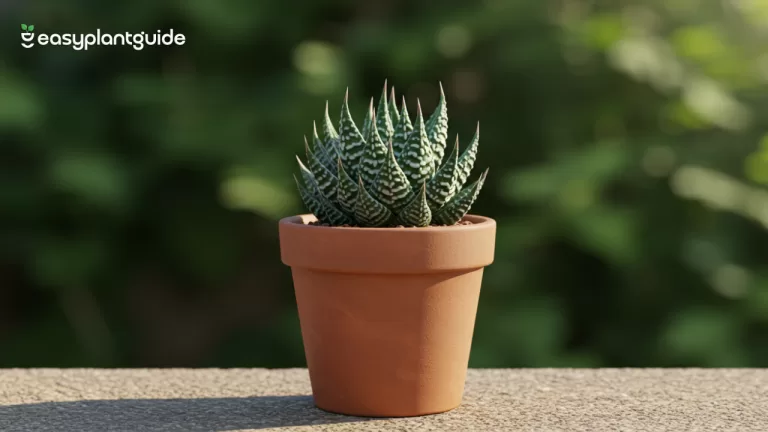7 Amazing Benefits of Ivy Trailing Plant You’ll Love
Introduction
If you’ve ever dreamed of having a lush green home that feels like a mini indoor jungle, then the ivy trailing plant might be your perfect match. With its cascading vines and hardy nature, ivy brings both beauty and practicality to your living space. But this plant is more than just a decorative piece—it’s a natural air purifier, a low-maintenance buddy, and an aesthetic game-changer.
In this article, we’ll explore everything about the ivy trailing plant—from its types and benefits to care tips and creative uses. Get ready, because you’ll soon see why this classic vine has stayed a favorite for centuries.

What is an Ivy Trailing Plant?
The ivy trailing plant refers to a variety of ivy species (especially English Ivy) that grow as climbing or hanging vines. Unlike upright plants, ivy prefers to sprawl, hang, or trail over surfaces, making it perfect for baskets, shelves, and walls.
It’s commonly used as:
- A hanging plant indoors
- A decorative plant in gardens
- A natural cover for walls and fences
- A trendy addition in modern home décor
Types of Ivy Trailing Plants
1. English Ivy (Hedera helix)
English Ivy is the classic and most recognized variety of ivy. It has small to medium-sized, dark green glossy leaves that may sometimes show pale veins. It’s highly adaptable and can grow indoors in hanging baskets or outdoors as a ground cover and wall climber. Its versatility and elegant look make it the go-to choice for many plant lovers.
2. Variegated Ivy
Variegated Ivy stands out with its two-toned leaves, combining shades of green with creamy white, yellow, or even silver edges. This variety adds brightness and contrast to both indoor décor and outdoor gardens. Since it reflects more light, it works wonderfully in spaces that need a little visual pop.
3. Algerian Ivy (Hedera canariensis)
Algerian Ivy has much larger leaves compared to English Ivy, often with a slightly leathery texture. It’s a fast-growing vine, which makes it excellent for quickly covering walls, fences, or trellises outdoors. Because of its vigorous growth, it requires regular pruning to keep it in check.
4. Persian Ivy (Hedera colchica)
Persian Ivy is known for its broad, thick, leathery leaves, often much bigger than other ivy types. The deep green foliage sometimes comes with variegated patterns, giving it a bold, dramatic look. It’s perfect for gardeners who want a statement plant that can withstand cooler conditions.
5. Irish Ivy
Irish Ivy is often confused with English Ivy but has slightly larger and more uniform leaves. It grows rapidly and is hardy, making it an excellent outdoor option for covering large areas. Its lush greenery creates a dense carpet or screen, offering both beauty and practicality.
Benefits of Growing Ivy Trailing Plant
Here are some top reasons people love having ivy around:
- Improves indoor air quality naturally
- Enhances home décor with a cascading look
- Adapts well to both indoor and outdoor spaces
- Creates a soothing, calming atmosphere
- Requires minimal maintenance compared to other plants
How to Care for Ivy Trailing Plant
Caring for ivy isn’t rocket science. Here’s what you need:
- Light: Bright, indirect sunlight works best.
- Watering: Keep the soil moist but not soggy.
- Humidity: Loves moderate to high humidity.
- Soil: Well-draining potting mix.
- Fertilizer: Feed monthly during the growing season.
5 Essential Tips to Keep Ivy Healthy
- Avoid overwatering, root rot is common.
- Trim vines regularly to encourage new growth.
- Rotate the pot to ensure even light exposure.
- Watch for pests like spider mites and aphids.
Best Places to Display Ivy Trailing Plant Indoors

If you’re wondering where to place your ivy, here are some stylish ideas:
- Hanging baskets in living rooms
- Bookshelves or office desks
- Windowsills with indirect light
- Kitchen shelves for a fresh vibe
Creative Outdoor Uses for Ivy Trailing Plants
- Garden walls and fences for a natural green screen
- Pergolas and trellises for shade
- Patio hanging baskets
- Ground cover to control weeds
- Decorating outdoor stair railings
Ivy Trailing Plant vs. Other Indoor Vines
| Feature | Ivy Trailing Plant | Pothos | Philodendron |
| Growth Style | Climbing & trailing | Trailing only | Trailing & climbing |
| Leaf Shape | Pointed, lobed | Heart-shaped | Heart-shaped |
| Maintenance Level | Moderate | Easy | Easy |
| Air-Purifying Ability | High | Moderate | High |
| Best Use | Indoors & outdoors | Indoors | Indoors |
5 Mistakes to Avoid When Growing Ivy
- Overwatering leads to yellow, drooping leaves and root rot.
- Neglecting pruning causes long, leggy vines with fewer leaves.
- Forgetting pest control invites spider mites, aphids, and scale insects.
- Placing ivy in direct harsh sunlight scorches and burns the leaves.
- Using poor-draining soil suffocates roots and stunts healthy growth.
Ivy Trailing Plant Propagation: Easy Guide
Want more ivy without buying? Propagation is simple:
- Cut a 4–6 inch healthy stem.
- Place in water until roots develop.
- Transfer to soil once roots are 2 inches long.
- Care for it like a mature plant.
Common Problems and Quick Fixes
- Yellowing leaves → Overwatering, reduce water.
- Brown edges → Low humidity, mist the plant.
- Drooping vines → Needs more light.
- Pest attacks → Use neem oil spray.
5 Reasons Ivy Makes the Best Houseplant
- Looks elegant and timeless, adding charm to any space.
- Improves oxygen levels indoors, making the air feel fresher.
- Versatile for hanging, trailing, or climbing displays.
- Brings a touch of nature into your décor effortlessly.
- Low-maintenance and easy to grow, even for beginners.
Is Ivy Safe for Pets?
Ivy is undeniably attractive with its cascading vines and lush green leaves, but pet owners need to be cautious. While it adds charm to your home, the ivy trailing plant is toxic to both cats and dogs if they chew on the leaves or stems. The plant contains substances called saponins and polyacetylene compounds, which can irritate the digestive system of animals. Common symptoms of ingestion include vomiting, diarrhea, drooling, abdominal pain, and swelling in the mouth or throat. In more severe cases, it can even cause difficulty breathing or lethargy.
Because cats and dogs are naturally curious, especially about dangling or trailing plants, it’s wise to keep ivy either out of reach or avoid growing it indoors altogether if you have pets. For a safer option, consider pet-friendly alternatives like spider plants, Boston ferns, or areca palms.
Seasonal Care for Ivy Trailing Plant
- Spring → Boost growth with fertilizer.
- Summer → Increase watering, avoid harsh sun.
- Autumn → Reduce fertilizer, prune lightly.
- Winter → Water sparingly, keep away from heaters.
Styling Ideas with Ivy Trailing Plants
- Use macrame plant hangers for a boho look.
- Pair ivy with fairy lights for cozy vibes.
- Mix with other trailing plants for a lush jungle effect.
- Train vines along window frames for a natural curtain.
- Use ivy in terrariums for a magical miniature garden.
Conclusion
The ivy trailing plant isn’t just another green accessory—it’s a living, breathing companion that transforms your home into a more refreshing and stylish space. With its cascading vines, easy care routine, and countless styling options, ivy proves itself as one of the best houseplants to own.
So, whether you want cleaner air, an aesthetic touch, or simply a low-maintenance plant, ivy checks all the boxes. Why not give it a try and let your home glow with a touch of green magic?
Checkout for more Blogs Deatils here.







